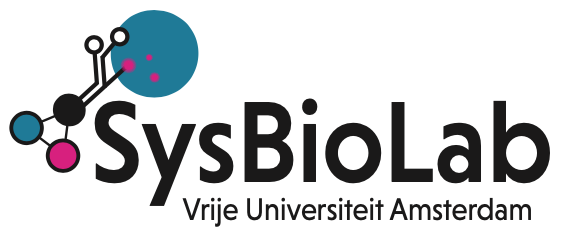Modeling and Microbial communities
Research group: Modeling and Microbial communities (Douwe Molenaar & Matti Gralka)
Our goal is to find common mechanisms behind the diverse phenotypes and behaviours of microorganisms. We use experimental and modeling tools to persue this goal. Mathematical modeling helps us to strip ideas and hypotheses to the necessary concepts that explain apparently complex phenomena like switching between different forms of metabolism. A guiding principle in such models is the idea that natural selection tends to increase the fitness of individuals and that fitness can be described as a mathematical function of the properties of an organism. Such models ideally predict properties of extant organisms and can be verified using omics and evolutionary experiments. Other classes of models that we create are of an encyclopedic nature, describing all metabolic reactions in a microorganism, or describe detailed kinetics of a part of metabolism. Such models are used in experimental cycles to interpret data and test and improve our knowledge of physiology.
The strategies that microorganisms use are also shaped by natural selection on the interactions with eachother. These interactions can also be understood by their direct and indirect effects on individual fitness. We investigate them by using individual-based fitness models. At a higher system level, we try to understand the interaction between individual fitness and properties of communities and ecosystems, like their species diversity and the metabolic reactions and interactions taking place. For this we use data driven approaches like (meta)genomics and transcriptomics analyses. To generate the necessary data and to tests hypotheses we carry out experiments in our lab but also cooperate with specialists working in, for example, food, environmental and medical microbiology.

Recent Comments